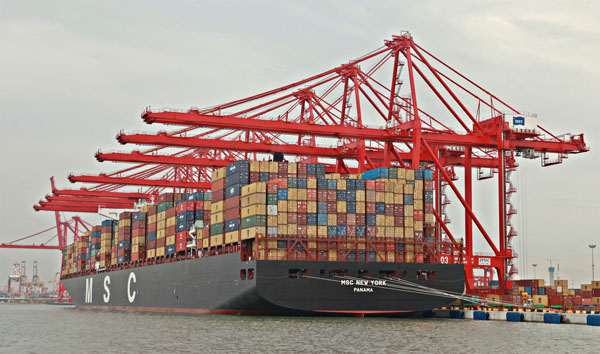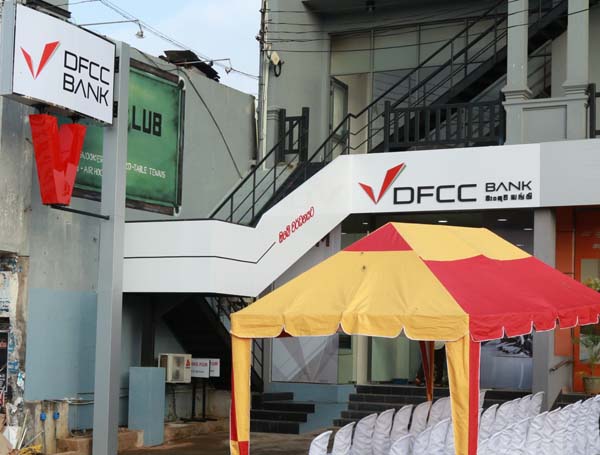
ULCCs boost Port of Colombo volume
CICT, region’s only deep water terminal attracts largest vessels plying the east-west route; contributes a third of Colombo Port’s throughput
Colombo International Container Terminals Ltd. (CICT) has set another milestone by closing 2015 with an impressive 1.561 million teus, with the ULCC (Ultra Large Container Carrier) and VLCC (Very large Container Carrier) segments making a 67% contribution to this volume.
CICT is the first and currently the only deep water terminal in South Asia equipped with facilities to handle the largest vessels afloat.The Port of Colombo ended 2015 with an impressive 5.185 million teus, an overall growth of 5.7% over 2014 volumes while some other transhipment ports in the region recorded negative growth.
CICT CEO Mr Nelson Liu stated that this record achievement was made possible due to the excellent port support auxiliaryservices provided by the Sri Lanka Ports Authority, Sri Lanka Customs and Sri Lanka Navy,which play a very critical but subtle role in the operations of the Port.The trust of customers and the support ofother stakeholders within the industry also contributed to CICT’s success, he said.
“While the efficient and professional pilotage services are well recognised by the Masters of the ULCC vessels calling at CICT, the initiative by the Customs Department to operate on 24 x 7 basis is also a keyfactor which facilitates faster movement of cargo during night time,” Mr Liu said. “All of these factors have laid a solid foundation for gaining the confidence of our business partners: the shipping lines, importers and exporters who entrusted us with their goods in the Port of Colombo.”
CICTreceivedsome of the largest vessels plying the Asia Europe routes in 2015. They included MSC New York (16,652 TEU), CMA CGM Marco Polo (16,020 TEU) and Edith Maersk, Estelle Maersk, Ebba Maersk, Elly Maersk and Eugene Maersk, each 14,770 TEUs.Many of these are now regular callers at CICT.
CICT also added two new shipping lines to provide new services to the Port of Colombo in 2015. They are China Shipping Container Line which ceased operations in Colombo over a decade ago and Korea Maritime Transport Company, a new customer to the Port of Colombo with plans to grow its network further in the coming years. Along with these new customers, new services are in the pipeline for the Port of Colombo in 2016.
CICT came into full operation in April 2014, 32 months ahead of its scheduled date of commencing operations with huge investment. This timing was perfect to meet the business opportunities coming up withULCC deliveries of the major global shipping lines and thus secured the Port Of Colombo’s position in the radar of these shipping linesas a transhipment hub capable of handling the largest vessels afloat.
As a result, the Port of Colombo can benefit from the opportunitiesarising from the evolution of new alliances and consortia such as the 2M, G6, and the CKYHE and the deployment of ULCCs, as itis fully equipped and ready to meet the requirements of all its customers and is in a position tofurther secureits indispensable position as a regional transhipment hub.
In 2014, the Port of Colombo achieved a throughput of 4.9 million teusrecording an increase of 600,000 teus and reflecting a year-on-year growth of 14%, making it thesecond fastest growing port globally, helped by CICT’svolume contribution of 686,639 teus.The new cargo volumes brought to the Port of Colombo were possible by the new state-of-the-art deep water container terminal facilities,world class productivity levels and best operation practices.
As a member of China Merchants Holdings International Company Limited (CMHI), the world’s second largest global terminal operator by throughput,which was awarded theTerminal Operator of the Year for 2015 by Lloyds in London,CICT has access to a wide network of 72 terminals operated and invested by CMHI across the globe, none of which are in any form of competition with the Port of Colombo. This is a unique advantage to boost the status and recognition of the Port of Colombo as a common user transhipment hub.
In 2016, CICT will launch aUS$ 10 million programmeas part of a larger investment on an initiative to introduce the ‘Green Port’ concept in the Port of Colombo, by converting the full fleet of the company’s diesel operated rubber-tyred-gantry cranes to electricity driven rubber-tyred gantry cranes (E-RTGs). The E-RTGs will have zero carbon emissions and reflectCICT’s commitment to reduce greenhouse gas emissions in the Port of Colombo and the maritime industry as a whole. CICT is committed to giving the Port of Colombo the support it needs to bethe region’s Green Port, the company said.


